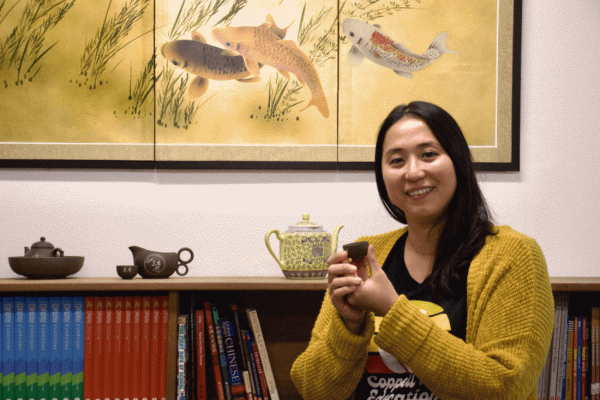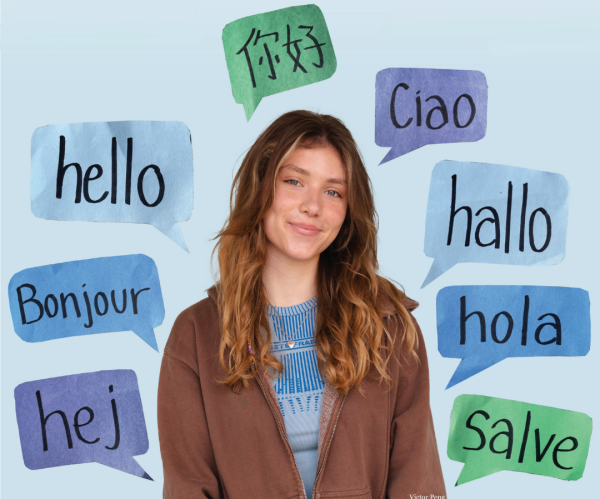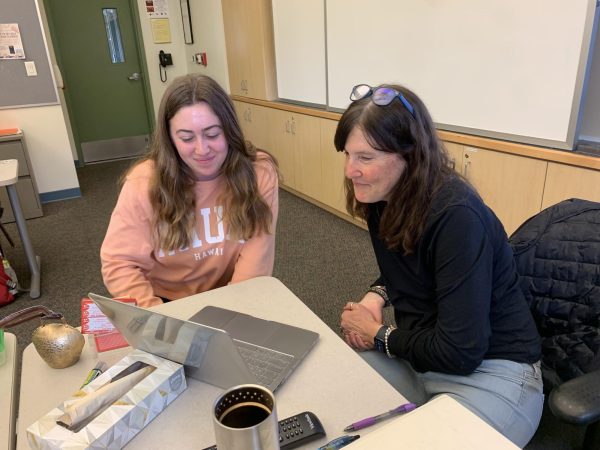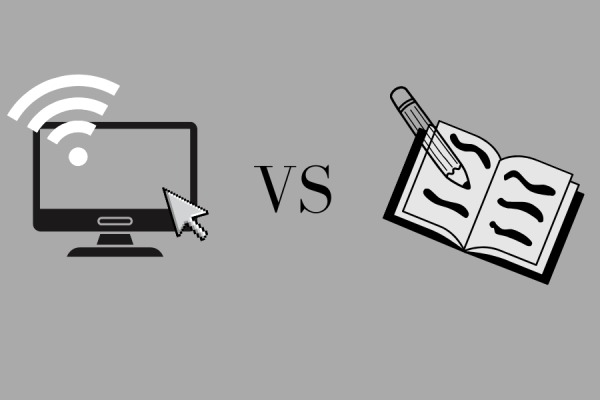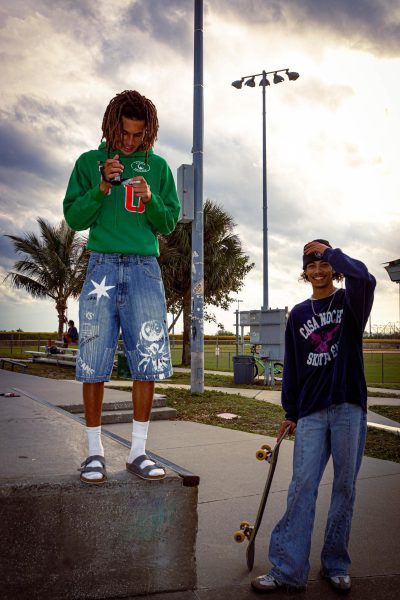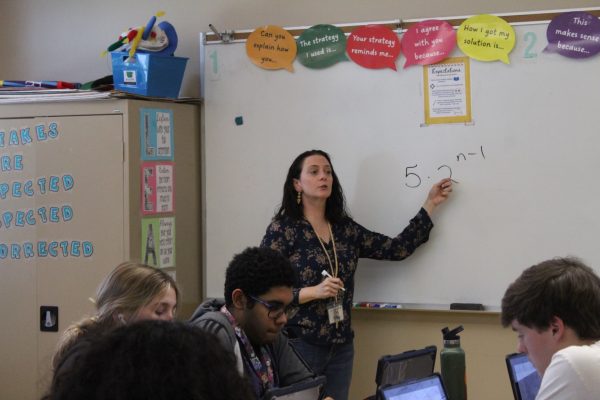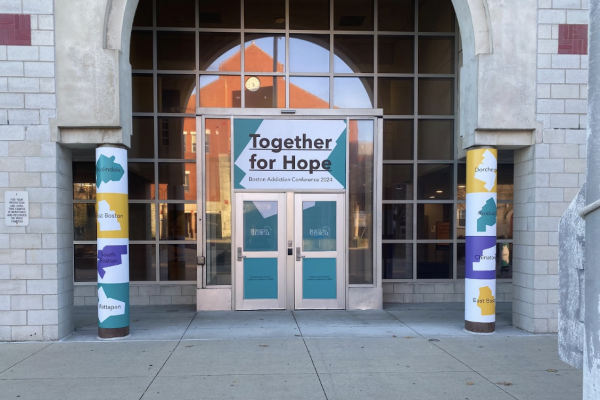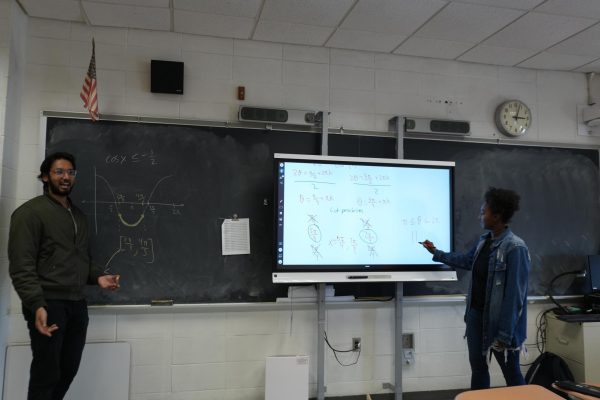Steps to Science impacts children through education

ARYA RAJESH & SPOORTHI MARADA
Arya Rajesh (first row, first box) and Spoorthi Marada (first row, second box) join several other elementary students in a group project of creating a demonstration for the layers of the Earth with construction paper as part of their geology lesson. The course lasts for 12-16 weeks with lessons and experiments throughout the course to summarize topics.
October 19, 2021
For most students, creating an organization during high school can cause additional stress, but students Arya Rajesh (11) and Spoorthi Marada (11) are an exception. The two created Steps to Science in the fall of 2020, which is a nonprofit organization that allows elementary school students in especially underprivileged areas to get a free science education. Teaching younger children different subjects requires more interactive guiding activities to be used. The courses in the organization are not just lecture-based but are also hands-on. This way the young students can process exactly what they are learning throughout the lessons.
“We split the lessons into different science fields like chemistry, physics and biology,” Rajesh said. “We do two lessons per area and then an experiment to apply what they’ve learned. Afterward, we do a review like a Kahoot game.”
The co-creators wanted to give elementary students the opportunity to explore the subject of science more deeply than they might have been able to with virtual learning.
“It’s a fun way to get elementary school students into science and provide a way for them to get hands-on experience in science early,” Rajesh said. “A lot of the time when you get into higher-level sciences in middle school, that’s only when you start experiments. I think that’s a big part of science where you get interested in it, so starting at a young age and seeing these cool reactions is a great way to get insight.”
For Marada, the best part about starting the organization is being able to interact with the kids.
“I like being able to teach the kids because it’s really interesting and entertaining,” Marada said. “We like creating the lessons and everything and it allows us to be creative.”
Creating and running an organization comes with challenges, including creating engaging lessons and keeping a steady number of members. Rajesh and Marada have endured many obstacles like these and more in order to keep their organization going.
“Some challenges are the legal aspects and getting more students enrolled, which can be difficult because we know kids don’t want to sit at their computers for a while,” Marada said. “The main thing is trying to promote teachers to contact [other] teachers and let them know what we’re doing. Parents sign up, but sometimes they can’t commit. It’s a bit tricky to navigate, but I think we’ve handled it.”
Rajesh feels accomplished that she has been able to not only pursue her love of science but also expose others to the world of science.
“I’m glad I can teach young kids and get them interested in science at a young age,” Rajesh said. “It’s honestly nice to know that I can spend my free time helping some kids in my community.”
Teaching through the organization has allowed Marada to show that science is as equally important as other subjects in school and should have more time dedicated to its teaching.
“It’s just extra enrichment and knowledge for them,” Marada said. “Especially because in elementary school, teachers usually focus on reading and math, which are important, but we want to push science a little more. Even the state standards don’t cover that much, and a lot of times teachers don’t even get to what they’re supposed to cover. If we teach it in a fun way, they’ll be more likely to pursue science for longer before it’s too difficult and give up.”
There are many different inspirations for people in career fields. For Rajesh, the pandemic opened her eyes to new inspiration in the science field.
“I’ve always been interested in science and it’s an awesome field,” Rajesh said. “Whether it be medical [or] things like that, you can find ways to explain things or create new things like the vaccine for example, which is awesome. In general, all of the scientists who worked this past year to try to find a vaccine and the health care professionals who continuously work inspire me.”
With Steps to Science, accessible teaching has made an impact on children and has opened them up to new possibilities and future career paths that they might not have dug deeper into if not for Steps to Science.
“Kids are usually really energetic and show positive responses when they enjoy something, and I know from our lessons that they like what we teach them,” Rajesh said. “A lot of times high school students take things for granted when they’re learning because we have so many classes. When they learn things like artificial intelligence, they’re like ‘Wow, that’s so cool,’ so it’s awesome to see how their young minds see things.”
This story was originally published on The Scroll on October 1, 2021.



























![IN THE SPOTLIGHT: Junior Zalie Mann performs “I Love to Cry at Weddings,” an ensemble piece from the fall musical Sweet Charity, to prospective students during the Fine Arts Showcase on Wednesday, Nov. 8. The showcase is a compilation of performances and demonstrations from each fine arts strand offered at McCallum. This show is put on so that prospective students can see if they are interested in joining an academy or major.
Sweet Charity originally ran the weekends of Sept. 28 and Oct. 8, but made a comeback for the Fine Arts Showcase.
“[Being at the front in the spotlight] is my favorite part of the whole dance, so I was super happy to be on stage performing and smiling at the audience,” Mann said.
Mann performed in both the musical theatre performance and dance excerpt “Ethereal,” a contemporary piece choreographed by the new dance director Terrance Carson, in the showcase. With also being a dance ambassador, Mann got to talk about what MAC dance is, her experience and answer any questions the aspiring arts majors and their parents may have.
Caption by Maya Tackett.](https://bestofsno.com/wp-content/uploads/2024/02/53321803427_47cd17fe70_o-1-1200x800.jpg)
![SPREADING THE JOY: Sophomore Chim Becker poses with sophomores Cozbi Sims and Lou Davidson while manning a table at the Hispanic Heritage treat day during lunch of Sept 28. Becker is a part of the students of color alliance, who put together the activity to raise money for their club.
“It [the stand] was really fun because McCallum has a lot of latino kids,” Becker said. “And I think it was nice that I could share the stuff that I usually just have at home with people who have never tried it before.”
Becker recognizes the importance of celebrating Hispanic heritage at Mac.
“I think its important to celebrate,” Becker said. “Because our culture is awesome and super cool, and everybody should be able to learn about other cultures of the world.”
Caption by JoJo Barnard.](https://bestofsno.com/wp-content/uploads/2024/01/53221601352_4127a81c41_o-1200x675.jpg)




